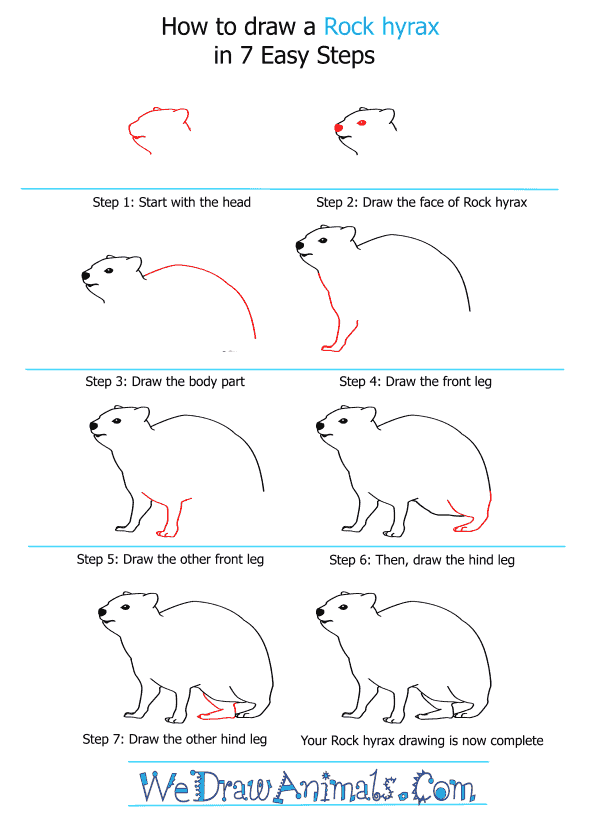In this quick tutorial you'll learn how to draw a Rock Hyrax in 7 easy steps - great for kids and novice artists.
The images above represent how your finished drawing is going to look and the steps involved.
Below are the individual steps - you can click on each one for a High Resolution printable PDF version.
At the bottom you can read some interesting facts about the Rock Hyrax.
Make sure you also check out any of the hundreds of drawing tutorials grouped by category.
How to Draw a Rock Hyrax - Step-by-Step Tutorial
Step 1: Begin by drawing the outline of the head and ears. Include a line beneath the snout to make a mouth
Step 2: Draw the eye and the nose. Make a small almond shaped eye and a larger dot for the nose
Step 3: Draw a curved line to make the back
Step 4: Draw the front leg and foot coming down from the neck
Step 5: Draw the other front leg and foot next to it. Include lines to connect it to the body
Step 6: Draw the back leg and foot. Make a line for the belly and some lines connecting the leg to the body. The back legs are thicker than the front
Step 7: Draw the other back leg and foot in front of the first one
Interesting Facts about the ROCK HYRAX
A Rock Hyrax is a member of the elephant family and the scientific term for them is Procavia capensis. Other popular names that it is known by are Rock Badger and Cape Hyrax. They are small land mammals that have tusks, a short neck, internal testicles, and long nose like an elephant, except less pronounced.
Did you know?
- They reach up to 9 pounds.
- These take turns standing guard so that they can eat without concern of predation.
- It can live to be 10 years old.
- This animal has been mentioned in ancient Jewish and Christian scriptures, but also a movie.
- They are found in 1 to 7 dozen members per group.
- These animals have dorsal glands with fluid for identity, but used by humans in medicine and perfume.
- It strays as far as 200 feet from their rocky safe haven.
Rock Hyrax’ forage on insects but mostly leaves of grass, bushes, and trees, at prairies in most parts of Africa and some areas of the Middle East. They thrive in small families of a large community where they survive longer by treating each other as their own, and use a primate-type communication system.








